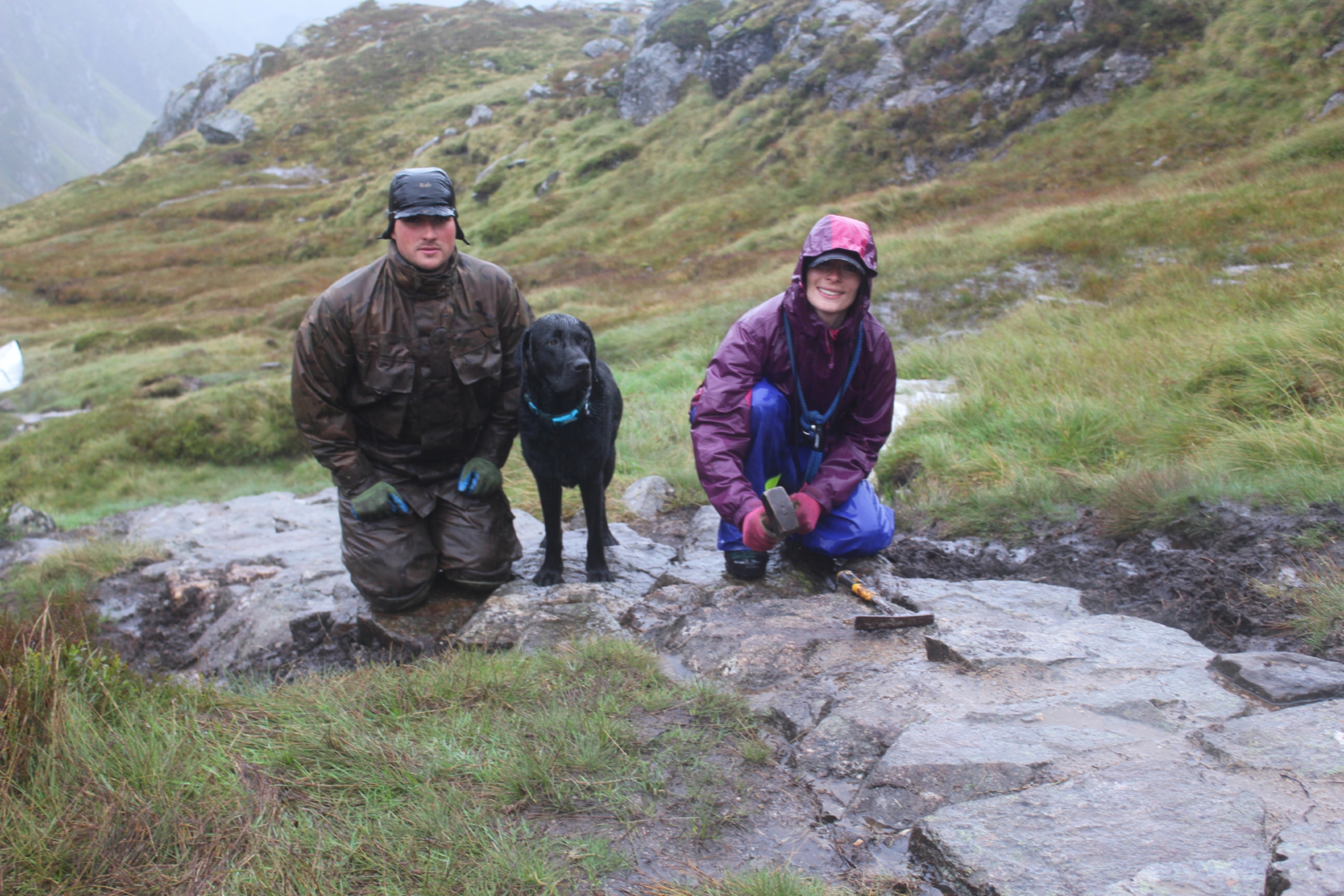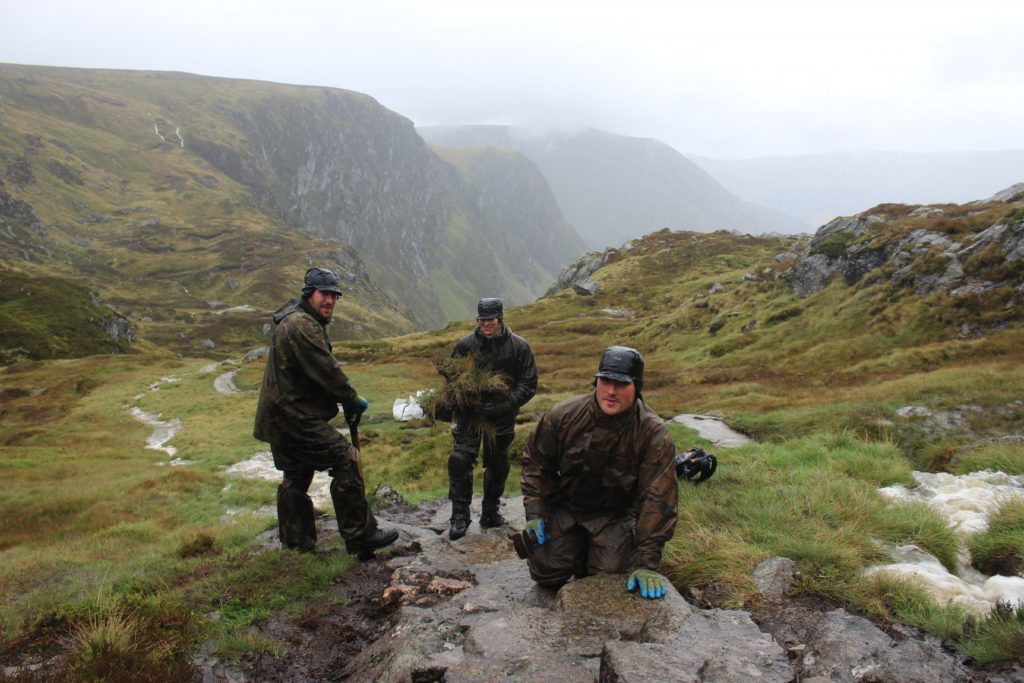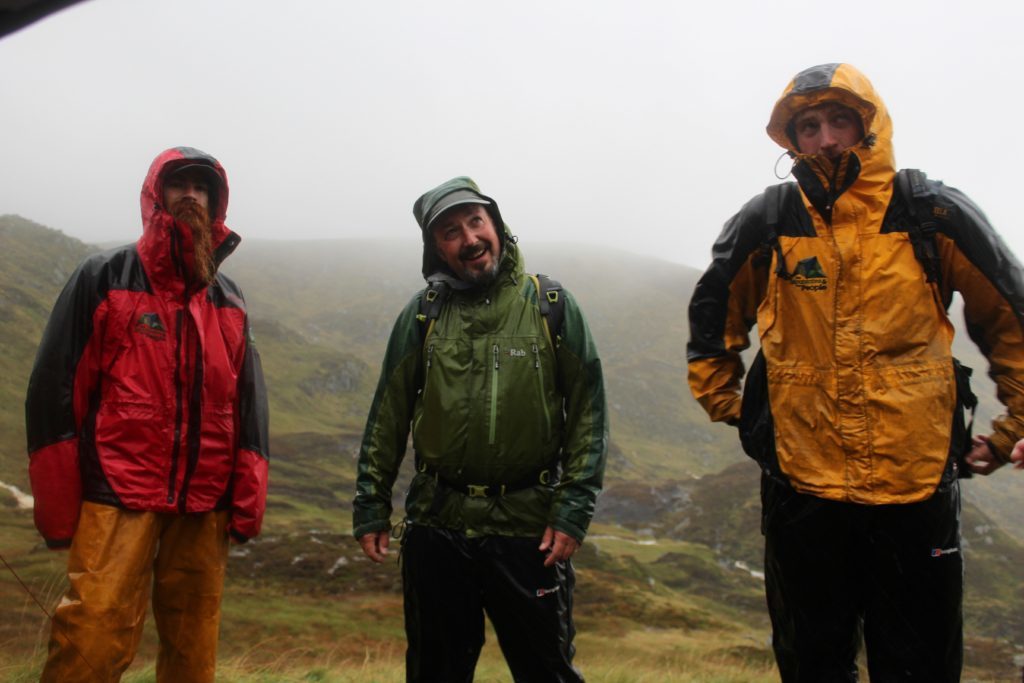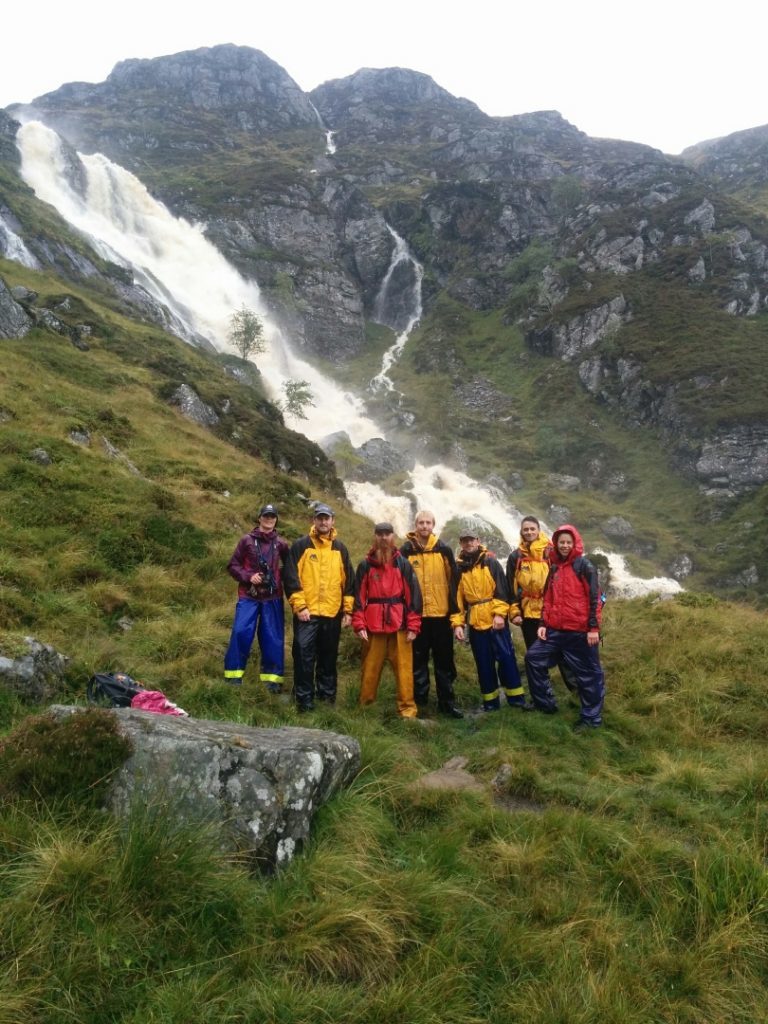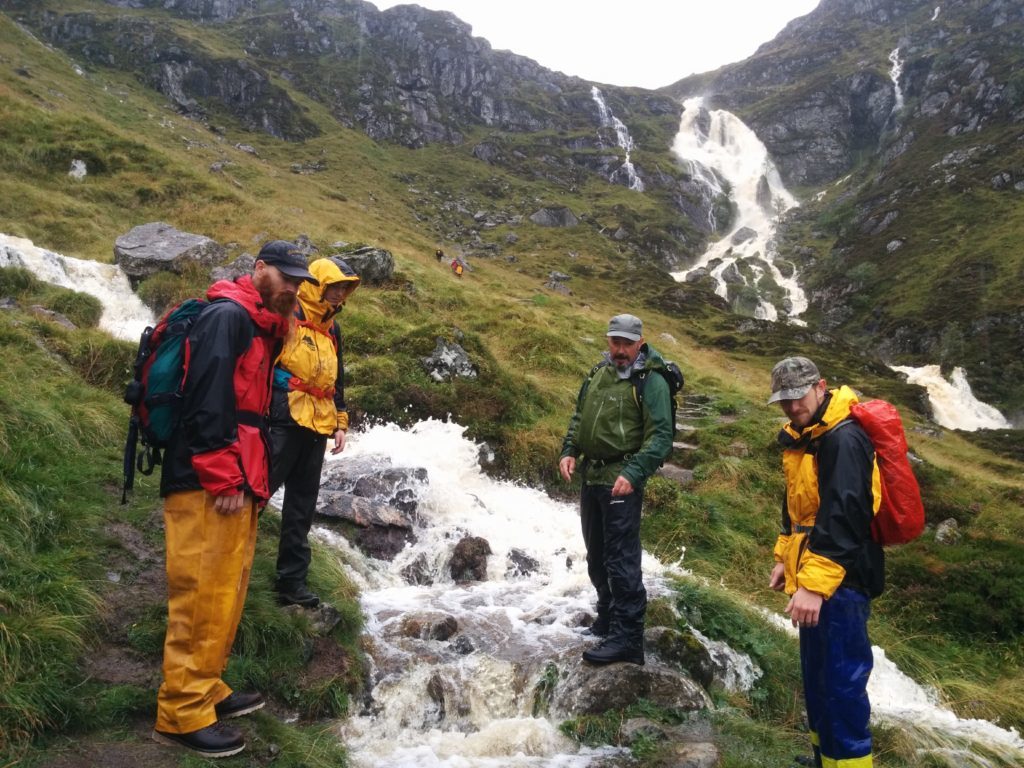A lot of blood, sweat and tears goes into maintaining the footpaths that run through our hills and glens. We head into the Angus Glens to meet the path builders (and lend a hand)
In just two hours, the tiny burn trickling down through the glen has become a raging torrent.
I’m soaked to the bone and kneeling in mud, attempting to hammer stones into a gap in a new footpath leading up to Mayar, the 928m Munro that towers above.
It’s taken more than an hour to march up here through torrential rain, and even though it’s probably about 13C, I’m cold.
I’m here with some hardy souls – the Cairngorms Outdoor Access Trust’s Gordon Paxton-White, a group of trainee path builders and Cairngorm Wilderness Contracts.
They’re all working towards the same goal – building and maintaining upland and mountain footpaths in some of the most beautiful, fragile and internationally important environments in Scotland.
It’s tough work, undertaken in all weathers, as I discover today, on perhaps the wettest, dreichest, most miserable day of the year.
Much of the work tackles erosion and wear and tear caused by everything from walkers to mountain bikes to horses and stalking ponies.
Water also plays a major role in path deterioration; low level paths, especially those beside rivers, can be highly susceptible to flash flooding, while heavy rainfall on upland paths can cause significant damage.
“With the likes of Storm Frank last winter, the sheer volume and speed at which the water fell and levels rose, caused great damage to paths and infrastructure,” says Gordon.
The section of path on the Mayar/Dreish circular route the guys are working on is suffering from major “path spread”, primarily due to the steepness and being very wet, plus as a result of high visitor numbers.
As the rain gets heavier and the wind whirls round our heads, we take refuge in a temporary shelter erected by Stuart Taggart and his colleagues at Cairngorm Wilderness Contracts. I’ve stupidly not brought a flask so I’m very grateful when Stuart offers me a cup of hot, sugary coffee.
Back to work and under Stuart’s instruction, I have a go at bashing some more stones into the new path. It’s heavy work and I warm up quickly.
When I ask where the stones have come from, Gordon points to dozens of huge white bags. The 160 bags, containing more than 130 tonnes of locally sourced material, were brought up by helicopters, which Gordon says was a “last resort” as they aim to take a “light touch” wherever possible.
The work will benefit hillwalkers and protected species (the area is part of the Caenlochan Special Area of Conservation and the Site of Special Scientific Interest).
Without getting too technical, Gordon tells me about some of the techniques used to construct and maintain paths.
“All paths are different and require individual thinking but the ‘meat and two veg’ standard items are aggregate path (raised, cambered, hand dug, machine dug) and waterbars (to deflect water off the path).
“There are cross drains to allow water to cross the path line without issues, pipe culverts, ditching, stone letts (short open channels at path edges to allow small amounts of standing or running water to drain), and anchor bars, which act as anchors to stop surface slippage and/or provide a small gradient change. There’s a lot more to it!”
On our way down, Gordon waxes lyrical about the job spec of a path builder.
“Design plays an important, as does construction. But the reality is, you need to be slightly nuts to stomp up and down some of the most unforgiving places in all weathers, get eaten by the most ferocious of midges or be burned to a crisp, to dig a hole and fill it back in with something else.
“However, it’s the most rewarding job when you sit back and look at something you’ve built, knowing it will be there for generations.
“Work in such remote locations can be challenging and at times dangerous, but by working with highly skilled specialist mountain path contractors, we’re able to deliver high quality, durable and sensitive path repairs which aim to encourage walkers to stick to designated routes and allow surrounding vegetation and habitats to re-establish.”
If you don’t fancy taking it up as a career but want to get involved in path conservation, there are loads of opportunities for volunteering.
On October 19, there’s a volunteer day in Corrie Fee at the foot of Mayar where volunteers will be taught skills required to maintain and repair sections of path affected by erosion.
There’s also the Adopt a Path scheme where volunteers are trained to monitor the condition of routes and complete surveys.
info
For more information on volunteering, contact volunteering@themountainsandthepeople.org.uk
Almost £300,000 will be spent repairing path networks on Mayar and Bachnagairn over the next four years as part of the Mountains and People Project.
The project is led by the Cairngorms Outdoor Access Trust (COAT), pairing the Cairngorms and Loch Lomond & the Trossachs national parks with Scottish Natural Heritage, Forestry Commission Scotland and the Heritage Lottery Fund.
